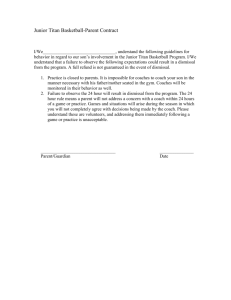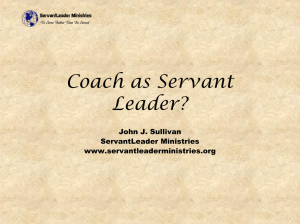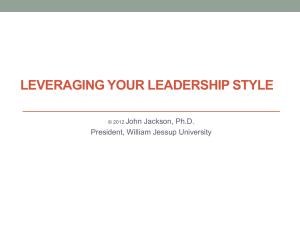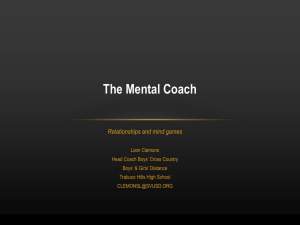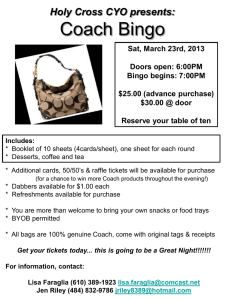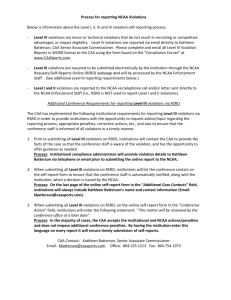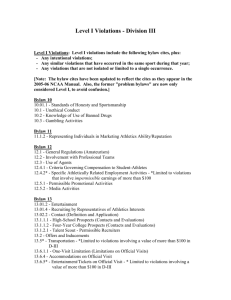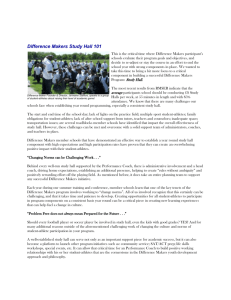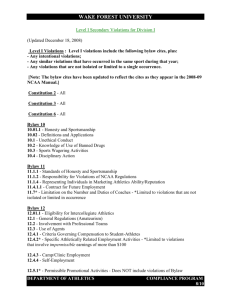TIP OF THE MONTH FOR COACHES
advertisement
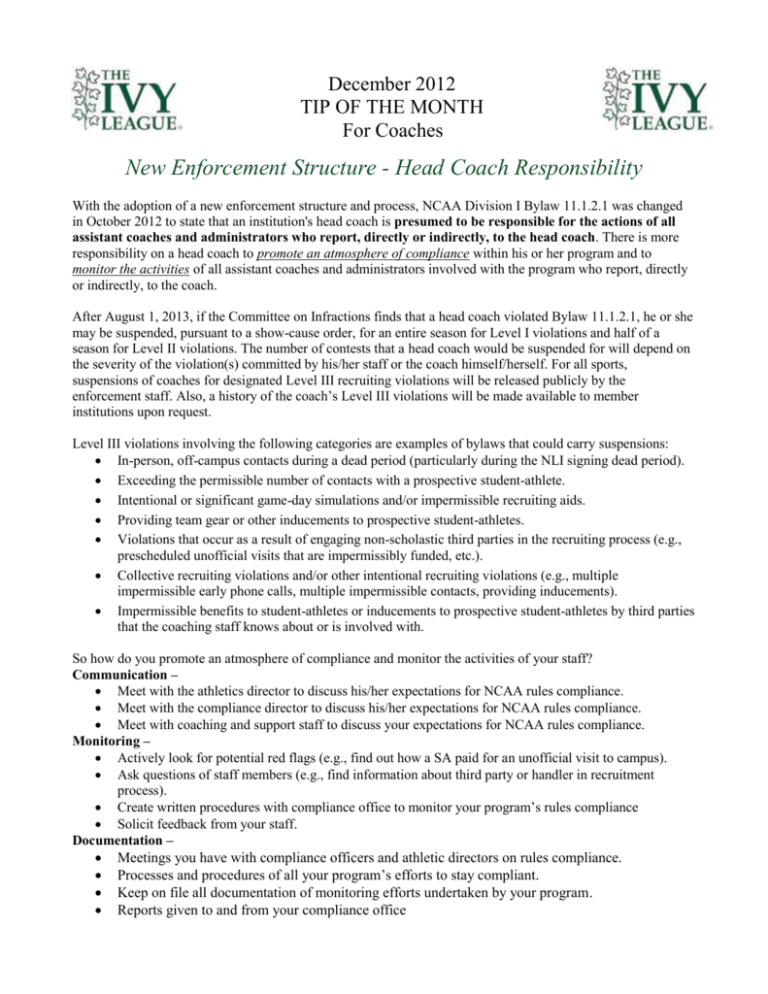
December 2012 TIP OF THE MONTH For Coaches New Enforcement Structure - Head Coach Responsibility With the adoption of a new enforcement structure and process, NCAA Division I Bylaw 11.1.2.1 was changed in October 2012 to state that an institution's head coach is presumed to be responsible for the actions of all assistant coaches and administrators who report, directly or indirectly, to the head coach. There is more responsibility on a head coach to promote an atmosphere of compliance within his or her program and to monitor the activities of all assistant coaches and administrators involved with the program who report, directly or indirectly, to the coach. After August 1, 2013, if the Committee on Infractions finds that a head coach violated Bylaw 11.1.2.1, he or she may be suspended, pursuant to a show-cause order, for an entire season for Level I violations and half of a season for Level II violations. The number of contests that a head coach would be suspended for will depend on the severity of the violation(s) committed by his/her staff or the coach himself/herself. For all sports, suspensions of coaches for designated Level III recruiting violations will be released publicly by the enforcement staff. Also, a history of the coach’s Level III violations will be made available to member institutions upon request. Level III violations involving the following categories are examples of bylaws that could carry suspensions: In-person, off-campus contacts during a dead period (particularly during the NLI signing dead period). Exceeding the permissible number of contacts with a prospective student-athlete. Intentional or significant game-day simulations and/or impermissible recruiting aids. Providing team gear or other inducements to prospective student-athletes. Violations that occur as a result of engaging non-scholastic third parties in the recruiting process (e.g., prescheduled unofficial visits that are impermissibly funded, etc.). Collective recruiting violations and/or other intentional recruiting violations (e.g., multiple impermissible early phone calls, multiple impermissible contacts, providing inducements). Impermissible benefits to student-athletes or inducements to prospective student-athletes by third parties that the coaching staff knows about or is involved with. So how do you promote an atmosphere of compliance and monitor the activities of your staff? Communication – Meet with the athletics director to discuss his/her expectations for NCAA rules compliance. Meet with the compliance director to discuss his/her expectations for NCAA rules compliance. Meet with coaching and support staff to discuss your expectations for NCAA rules compliance. Monitoring – Actively look for potential red flags (e.g., find out how a SA paid for an unofficial visit to campus). Ask questions of staff members (e.g., find information about third party or handler in recruitment process). Create written procedures with compliance office to monitor your program’s rules compliance Solicit feedback from your staff. Documentation – Meetings you have with compliance officers and athletic directors on rules compliance. Processes and procedures of all your program’s efforts to stay compliant. Keep on file all documentation of monitoring efforts undertaken by your program. Reports given to and from your compliance office
